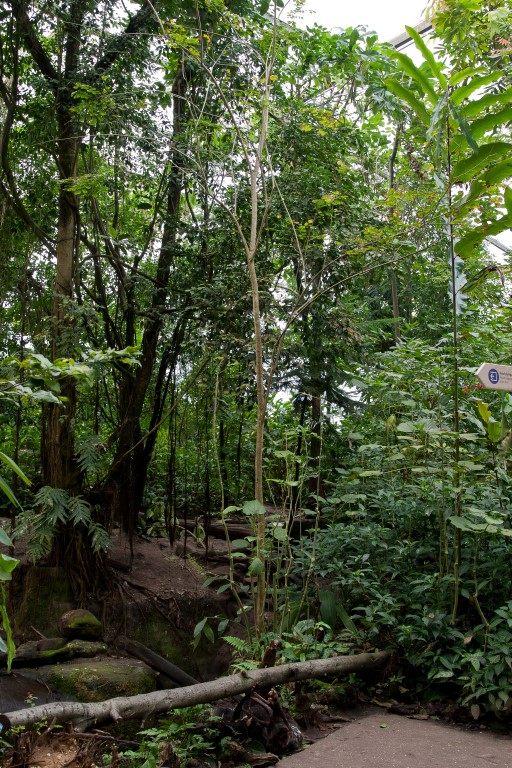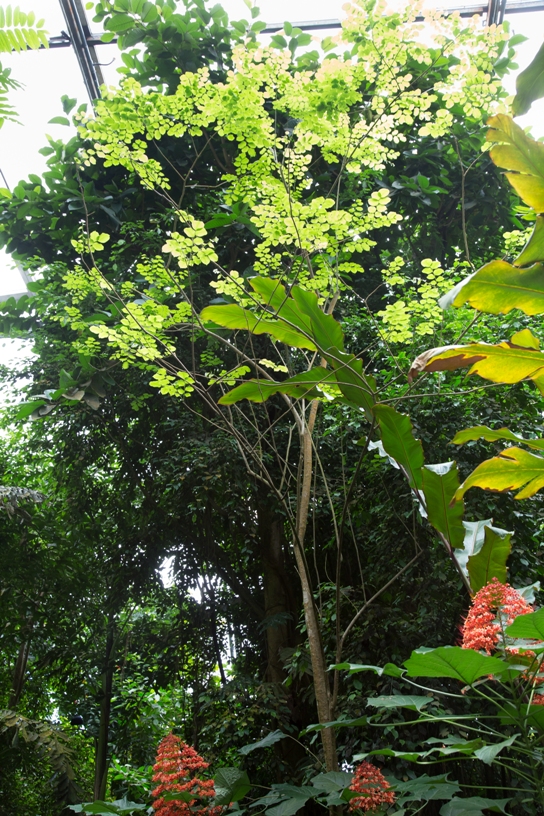Amboyna Wood
Pterocarpus indicus
Bean family (Fabaceae)
National tree of the Philippines
Burmese rosewood can grow to heights of 40 m or more and 3 m wide, sometimes with buttress roots (supporting roots above ground at the base of a tree). Its compound leaf is composed of 5 - 13 leaflets. In the past the purplish hardwood (padoek, linggoea of narra in Indian) was used extensively for musical instruments, ornaments and furniture.
In folk medicine the tree has numerous uses, which are very old and have reach to Europe. From the 16th century drinking vessels made from the heartwood were popular with the affluent because of the fluorescent blue colour that the vessel gave to the water. This blue water and wood ground into a powder was said to have medicinal properties.
In Asia the wood was used to build boats because it is resistant to seawater. It is the source of ‘narrin’, a red dye. Burmese rosewood is grown in tropical countries for timber production and also as an ornamental tree in parks and along boulevards.
The fruit is a round pod with a flat, rounded wing. In each pod there are two seeds. Pods do not open themselves; with ripe seeds they can stay hanging to the tree for several years. The seeds are dispersed by the wind.
Read more.... »Themes
The young leaves and flowers can be eaten when in flower.
The timbers of all species of Pterocarpus is of high quality. It is moderately hard, moderately heavy and easy to work. In the past the purplish hardwood (termed 'padoek', 'linggoea' of 'narra' in India) was used extensively for musical instruments and ornamental furniture. In Asia the wood was used to build boats because it is resistant to seawater.
In folklaw this tree has numerous medicinal uses, all of which are centuries old and have even extended across Europe. The red latex is used in folk remedies for tumors and the plant for cancers, especially of the mouth.
From the 16th century, drinking vessels made from the heartwood were popular with the gentry because of its fluorescent blue colour that the vessel gave to the water. This blue water and the wood, ground into a powder, were said to have medicinal properties.
The wood is the source of ‘narrin’, a red dye.
Details
| Description: | Tree, up to 40 m. |
|---|---|
| Distributions: | Southeast asia and the islands to the north of australia |
| Habitat: | Tropical rainforests, especially along tidal streams and rocky coasts. |
| Year cycle: | Perennial (polycarpic decidous) |
| Hardiness: | Warmer than 59 f (heated glasshouse - tropical) |
| Flowering period: | Februari - mei |
| Flower color: | Yellow |
| Notes on flowers: | The flowers are yellow, fragrant, and borne in large axillary panicles; when flowering, the buds do not open in daily sequence but as the buds reach full size and then only when an unknown trigger is activated; the opened flowers last for one day after that several days may pass before another batch of accumulated 'flowering-ready' buds open. |
| Fruiting period: | Juli - oktober |

